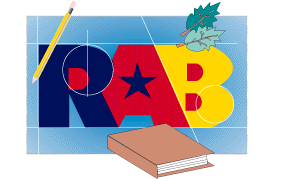As part of his fiscal year 1999 budget proposal, President Clinton has included $2.3 million to fund new health care and education categories for the Malcolm Baldrige National Quality Award. Currently, the award honors organizations from the manufacturing, small business and service sectors. "The same benefits that U.S. businesses have gained as a result of the Baldrige Award can -- and should be -- extended to nonprofit health care and education organizations," says Commerce Secretary William Daley. "These communities want it and so does business." In May 1997, the Baldrige Foundation, a private-sector organization responsible for raising money to help fund the award program, instituted a $15 million fund drive for an endowment to establish the new health care and education categories. In his 1998 fiscal budget, President Clinton requested $5.3 million to fund the existing programs as well as the two new categories; however, Congress allocated only $3 million, which prevented the award from expanding. But with the help of the departments of Education and Veterans Affairs, the Baldrige Award program was able to provide new health care and education quality criteria at the beginning of this year. In October 1997, Senator William Frist (R-Tennessee), along with his Senate colleagues John D. Rockefeller IV (D-West Virginia), Conrad Burns (R-Montana) and Ernest Hollings (D-South Carolina), introduced Senate bill S1325, "Technology Administration Authorization Act for Fiscal Years 1998 and 1999." Section 8 of the bill amends the Malcolm Baldrige National Quality Improvement Act of 1987 to include health care and education award categories. Martin Mariner, a Baldrige Foundation member, says the organization currently is focusing on three goals: raising additional money for the new categories, increasing participation in the Baldrige Award process and ensuring that Congress passes S1325. "We are optimistic that the bill will go through," he states. A decision on S1325 is expected soon. If it passes and becomes law, an early crop of health care and education organizations could find themselves vying for the Baldrige Award in 1999. Health Care, Education Criteria Available Health care and education organizations interested in improving their processes and overall performance can now take advantage of Baldrige Award-based criteria provided by the National Institute of Standards and Technology. Although the Baldrige Award currently is open only to for-profit businesses, NIST has made criteria available for these new areas. In 1995, NIST conducted a successful pilot award program to determine the interest and readiness of both health care and education organizations in participating in a Baldrige Award program. Forty-six health care and 19 education organizations submitted applications for the pilot. In conjunction with the pilot, NIST distributed more than 30,000 copies of performance excellence criteria modeled after the criteria for the business award. Since then, federal funding has not been available to continue the pilots or to establish award categories. NIST developed the current performance excellence criteria for health care and education organizations with funding from the U.S. departments of Veterans Affairs and Education. Single copies of the health care and education criteria are available free of charge from NIST at telephone (301) 975-2036 or fax (301) 948-3716. The criteria and other information also are available on the Baldrige Award Web site at www.quality.nist.gov. Two Companies Win
First Ron Brown Award IBM Corp. and Levi Strauss & Co. have become the first recipients of the Ron Brown Award for Corporate Leadership. President Clinton presented the awards to Louis V. Gerstner Jr., chairman and CEO of IBM Corp., and Robert D. Haas, chairman and CEO of Levi Strauss & Co., during ceremonies at the White House. Named for the late U.S. Secretary of Commerce Ron Brown, the award honors organizations for outstanding achievements in employee and community relations. A distinguished panel of judges selected the winners after reviewing 488 programs submitted by 120 companies. IBM received the award for offering leadership diversity training, women's programs, opportunities for minority- and women-owned businesses, and for recruiting among minority groups. Levi Strauss & Co. earned recognition for "Project Change," a broad-based program that addresses racial prejudice and institutional racism in communities where the company operates. President Clinton also presented honorable mention awards to:  Bright Horizons, a child-care provider at company work sites Bright Horizons, a child-care provider at company work sites
 Public Service Electric and Gas Co., an electric and gas utility company Public Service Electric and Gas Co., an electric and gas utility company
 Lancaster Laboratories, one of the nation's largest contract laboratories Lancaster Laboratories, one of the nation's largest contract laboratories
For more information about the award, contact The Conference Board at telephone (212) 759-0900 or visit the award's Web site at www.ron-brown-award.org.  Baldrige Index Outperforms Baldrige Index Outperforms
Standard & Poor's 500
For the fourth year in a row, the fictitious "Baldrige Index" has outperformed the Standard & Poor's 500 by nearly 3 to 1, according to the Commerce Department's National Institute of Standards and Technology. The Baldrige Index is made up of publicly traded U.S. companies that have received the Malcolm Baldrige National Quality Award during the years 1988 to 1996. NIST simulated a $1,000 investment in each of the six whole-company winners of the Baldrige Award -- ADAC Laboratories, Eastman Chemical Co., Federal Express Corp., Motorola Inc., Solectron Corp. and Zytec Corp. The investments were tracked from the first business day of the month following the announcement of award recipients (or the date they began public trading) to Dec. 1, 1997. Another $1,000 was hypothetically invested in the S&P 500 at the same time. The six Baldrige winners outperformed the S&P 500 by more than 2.7 to 1, achieving a 394.5 percent return on investment compared with a 146.9 percent return for the S&P 500. NIST also tracked a similar hypothetical investment in a group made up of the six whole-company Baldrige Award winners and the parent companies of 12 subsidiary winners. This group of 18 companies outperformed the S&P 500 by 2.4 to 1, a 362.3 percent return on investment compared with a 148.3 percent return for the S&P 500. SA8000 Gaining Momentum Sponsors of Social Accountability 8000 -- the international, interindustry standard introduced last fall to ensure humane working conditions -- have been working to bring the standard to the attention of international accreditation bodies. In January, the Council on Economic Priorities Accreditation Agency, the standard's main sponsor, visited Guangzhou, China, to make an SA8000 presentation at a meeting of the International Accreditation Forum, a membership group of ISO 9000 accreditation bodies and interested stakeholders. The IAF meeting was very successful, and the CEPAA intends to apply for IAF membership, says Eileen Kohl Kaufman, CEPAA's program director for SA8000. In the meantime, CEPAA has chosen and trained six people to serve as auditors for SA8000 compliance. Fifteen applications for registrar accreditation to SA8000 were sent out in late January, and completed applications already have begun returning. CEPAA continues to field calls from large and small firms alike, all of which are interested in finding out more about the standard and its potential for their organizations. In progress is the council's application to have SA8000 accepted by the American National Standards Institute. "I have complete, total faith that SA8000 will make a difference for many people," asserts Kaufman. "It will provide a way to implement international ideals without having international conventions, agreements and governments do it."  ISO 14001 Auditor Program Faces Changes ISO 14001 Auditor Program Faces Changes
On June 30, a limited-time option for applicants to the Registrar Accreditation Board's ISO 14001 auditor certification program will expire. After that date, applicants must prove previous EMS audit experience rather than the currently acceptable combinations of EMS, compliance or other management systems audits. RAB's EMS auditor program certifies the existing credentials of individual EMS auditors at one of three grades: EMS lead auditor, EMS auditor and EMS provisional auditor. Each applicant for certification must meet education, training, environmental work experience and personal attributes requirements. Additionally, for the two highest certification grades, audit experience and, beginning July 1, specifically EMS audit experience is required. Environmental stakeholders prompted the decision to end the limited-time option and to implement the witnessed audit requirement. RAB will implement the post-LTO program in two phases. Phase one will waive the requirement for witnessed audit experiences until June 30, 2000; originally, witnessed audits would have been required after June 30 of this year. A witnessed audit occurs when an appropriate person, usually a certified EMS lead auditor, observes the working auditor's performance. Phase two begins July 1, 2000, when the requirement for witnessed audit experience will take effect and all audit experience from then on must be verified by a certified EMS lead auditor. For more information on RAB's EMS auditor certification program, contact RAB at telephone (888) 722-2440 or by e-mail at rab@rabnet.com.  ASTM Sponsors Standards Contest ASTM Sponsors Standards Contest
During its centennial year celebration, the American Society for Testing and Materials is sponsoring "The Impact of Standards" research paper contest, which seeks case studies documenting how ASTM standards have made a measurable difference in a company, industry, government agency or in consumers' lives. The winning paper will receive $5,000; a second prize of $3,000 and third prize of $2,000 also will be awarded. All submitted papers must address the following issues:  A problem facing an industry, government agency, company or consumer that was solved by applying one or more ASTM standards (e.g., safety issues, impediments to trade, product inconsistency or high costs). A problem facing an industry, government agency, company or consumer that was solved by applying one or more ASTM standards (e.g., safety issues, impediments to trade, product inconsistency or high costs).
 The resources necessary for developing the standard, such as personnel, research or interlaboratory testing programs. The resources necessary for developing the standard, such as personnel, research or interlaboratory testing programs.
 How the standards were applied. How the standards were applied.
 The standards' beneficial impacts. The case study must demonstrate through measurable and quantitative details the standards' tangible and intangible values, including cost savings, cost avoidance, product improvement and public safety. The standards' beneficial impacts. The case study must demonstrate through measurable and quantitative details the standards' tangible and intangible values, including cost savings, cost avoidance, product improvement and public safety.
Contest winners will be announced at the society's 100th anniversary celebration in Atlanta June 16. Winning papers will be published in ASTM's monthly magazine, Standardization News. Registration for the contest is required. Deadline for entries is May 1. For registration information, contact ASTM at telephone (610) 832-9607, fax (610) 832-9623 or e-mail msikora@astm.org.  Baldrige Spotlight: Solectron Corp. Baldrige Spotlight: Solectron Corp.
In 1997, Solectron Corp., the Milpitas, California-based electronics design and manufacturing services company, became the first organization to win the Baldrige Award twice. A lot has happened at Solectron since its first win in 1991. The company's work force has skyrocketed from just under 2,000 to more than 18,000, following a number of mergers and acquisitions. Building quality processes while experiencing such rapid growth has been one of Solectron's biggest challenges. "Part of our acquisition process involves integrating cultures and organizations that we are bringing across," notes Susan Wang, Solec-tron's senior vice president and chief financial officer. "We have a company culture that is very powerful, and we really depend on every one of our people to be a quality technician." Although Solectron has won the nation's top quality award, it continues to look for ways to improve. Even before applying for their first Baldrige Award, Solectron set up benchmarking programs to work with other companies. The process benefits everyone involved, according to Wang. "The benchmarking program allows us to reach out to companies that we believe have best practices in whatever process we are seeking to improve upon and vice versa," she explains. For Solectron, as with other Baldrige-winning companies, the Baldrige feedback report serves as a pivotal part of their company's improvement strategy. "We use the feedback report as part of our long-range planning in everything we do," says Wang. "Among other things, we discuss and identify Solectron's strengths and try to match them to today's market. We see where we have the greatest challenges and, accordingly, develop plans to ensure that our weaknesses are corrected." Wang credits Solectron's continuing success to its people. "The only thing we really have to sell is our people and their skills," she emphasizes. "Our strategic planning revolves around that. We have to ensure that the workload, dedication and quality don't get diluted." |

